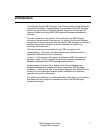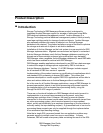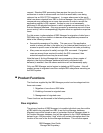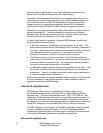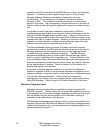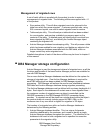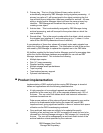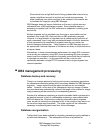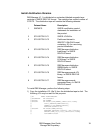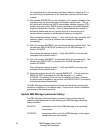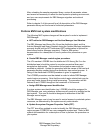14 DB2 Manager User Guide
StorageTek Proprietary
2. Primary key. This is a 4-byte (fullword) binary value, which is
automatically assigned by DB2 Manager during migration processing. A
primary key value of 1 will be assigned to the object containing the first
row archived from a table after it has been enabled for archival. All rows
within a single Archive Manager object will have the same primary key
identifier. DB2 Manager will increment the primary key by 1 when
creating a new object.
3. Archive date. This is automatically assigned by DB2 Manager during
archival processing, and will be equal to the system date on which the
row is archived.
4. Record offset. This is the record number within the object, which contains
the migrated row (starting at 0, and continuing up to n-1, where ‘n’ is the
value of the OBJSIZE parameter at time of archival).
A concatenation of these four values will uniquely index each migrated row
within the Archive Manager database. This information is held in the archive
stub used by DB2 Manager to replace the migrated row in the DB2 table.
All facilities supplied by the base Archive Manager product for managing data
within the Archive Manager database are available for use with an DB2
Manager implementation. This includes the following:
• Multiple tape copies
• Disk (‘K’) copy processing
• Disaster recovery support
• Multiple storage levels per database
• Tape recycling
• Tape backup/recovery support
• Dynamic load balancing
Product implementation
Implementation of DB2 archival solutions using DB2 Manager is aimed at
tables and applications with the following characteristics:
• A high proportion of row retrieval requests are satisfied from a small
proportion of the rows (eg) 90% of the requests reference only 10% of
the rows. This can occur with tables which hold historical information –
customer transactions etc.
Data access patterns of this nature will permit an aggressive row archive
policy to be implemented while limiting the impact on overall DB2
response times, giving significant benefits in terms of reduced disk space
utilization and/or DB2 housekeeping overhead.
• Once archived, data rows are unlikely to be updated frequently.
Updating of an archived row via SQL command will cause the row to be
returned from Archive Manager storage to DB2 storage (ie) “unarchiving”
the row. The row will be subsequently re-archived under control of the
archival selection criteria specified by the customer.




